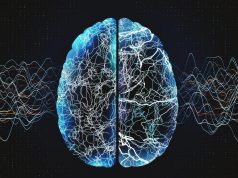Coronary CT angiography accurate after implantation of bioresorbable vascular scaffolds
MONDAY, July 24, 2017 (HealthDay News) — Coronary computed tomography angiography (CCTA) is accurate for assessing angiographic outcomes after bioresorbable vascular scaffold (BVS) implantation, according to a study published online July 19 in JACC: Cardiovascular Imaging.
Carlos Collet, M.D., from the University of Amsterdam, and colleagues examined the diagnostic accuracy of CCTA for assessing angiographic outcomes after implantation of BVS. Two hundred thirty-eight patients (258 lesions) treated with BVS implantation underwent coronary angiography with intravascular ultrasound (IVUS) evaluation and CCTA at three-year follow-up in the ABSORB II study. The area under the receiver operating characteristic curve (AUC) was used to assess the diagnostic accuracy of CCTA.
The researchers found that with quantitative coronary angiography as reference, the mean difference in CCTA-derived minimum luminal diameter was 0.14 mm, whereas the mean difference in minimal luminal area (MLA) was 0.73 mm² with IVUS as reference. The AUC was 0.88 for the per-scaffold diagnostic accuracy of CCTA for detecting stenosis based on coronary angiography diameter stenosis ≥50 percent, with sensitivity and specificity of 80 and 100 percent, respectively; diagnostic accuracy based on IVUS MLA ≤2.5 mm² showed an AUC of 0.83. with sensitivity and specificity of 71 and 82 percent, respectively. For identifying patients with a significant lesion based on the IVUS criteria, the diagnostic accuracy of CCTA was similar to coronary angiography.
“CCTA has good diagnostic accuracy to detect in-scaffold luminal obstruction and to assess luminal dimensions after BVS implantation,” the authors write. “CCTA might become the method of choice for the evaluation of patients treated with BVS.”
Several authors are members of the International Advisory Board for Abbott Vascular.
Copyright © 2017 HealthDay. All rights reserved.








